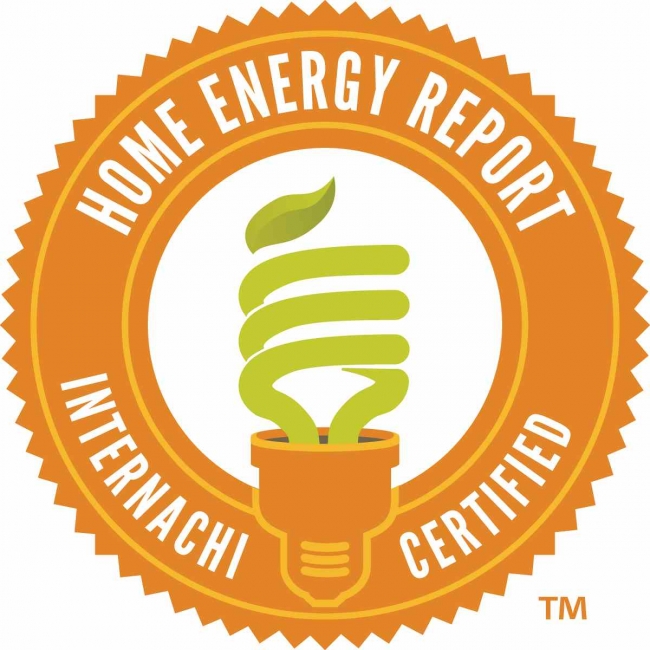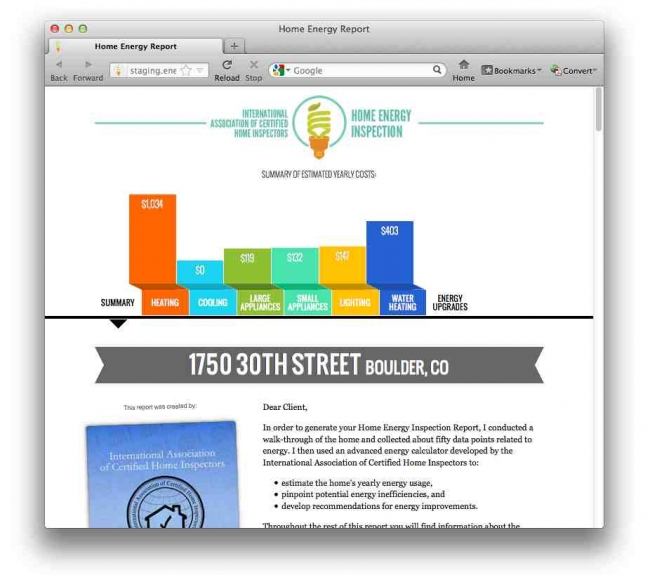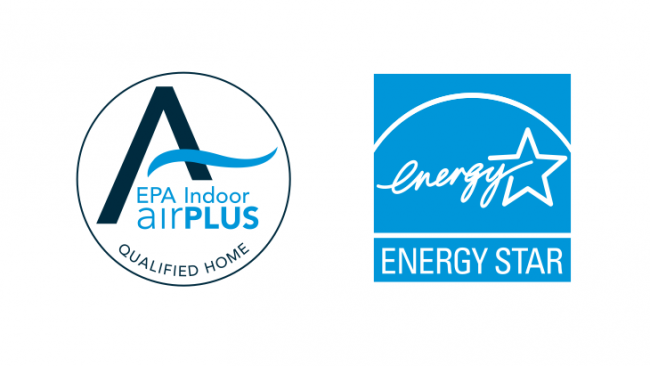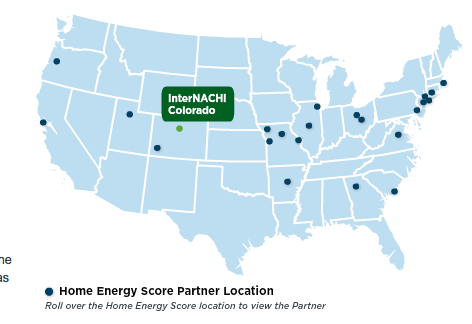Throwing Money Away
Most homeowners throw away the equivalent of a 42" flat-screen TV
every year in wasted energy. They’re throwing away a brand new mountain
bike or a really nice gas grill, or a weekend getaway vacation--because
their home is wasting energy. And wasting energy is like throwing away
money.
The typical American home wastes energy. We know that out of the
130 million homes in the U.S., 80 million were built between 1980 and
2000, which means that they pre-date modern energy standards and are
associated with higher energy use and operating costs per square foot.
We also know that the average American household spends about $2,500 on
energy every year. But what most homeowners don’t know is that about
30% of that energy--and 30% of that money--is wasted.
Many homeowners could save hundreds of dollars every year without
really changing their lifestyle. InterNACHI’s Home Energy Report™
provides simple, basic, prescriptive measures that millions of
homeowners can take to reduce their energy bills, while making their
homes more comfortable, and use that money for something they really
want.
Home Energy Report™
- estimate a home's energy costs and;
- generate an online report that provides recommendations on how to save energy, increase comfort, and protect the environment.
Note: InterNACHI's Home Energy Report
™ is not the Home Energy Score.
Play the 1-minute video (below):
 How Does It Work?
How Does It Work?
The Home Energy Report™ was developed by InterNACHI to be:
- a reporting tool for Home Energy Inspectors™; and
- an affordable inspection service for current and prospective homeowners.
A Home Energy Inspector™ can complete a Home Energy Report™ in an extra 10
minutes, if done as part of a general home inspection,
and in less than
one hour, if done as a stand-alone inspection service. It is not a
comprehensive energy audit and no diagnostic tools are needed. The Home
Energy Inspector™ is not an energy auditor. Home Energy Inspectors™ are
trained and certified by InterNACHI.
The Home Energy Saver™ interface portal is the world's most comprehensive web service for home energy analysis. The Home Energy Saver™ engine helps empower the Home Energy Inspector™ to:
- produce a report in a matter of seconds;
- collect and save home-description information from customers;
- compute a home’s energy use, cost, and carbon footprint on-line in a
matter of seconds based on state-of-the-art models and data for any
location in the United States;
- perform operational or asset ratings;
- estimate the relative importance of specific end uses (heating,
cooling, water heating, major appliances, small appliances, and
lighting);
- generate a list of energy-saving upgrade recommendations;
- create a payback-ranked list of energy-efficiency improvements;
- generate a wide range of summary and drill-down reports; and
- produce an InterNACHI Home Energy Report™ in a matter of seconds.
Home Energy Report™ is Online
The online report supports the way people learn today -- online.
Because the report is online, it is essentially a customer
Web
portal that provides informative content and personalized advice
designed to engage the consumer through interaction. Through the report,
current and
prospective homeowners can do some research, make informed decisions,
and take energy-saving action on their own. The tool is designed to
provide a meaningful customer experience and understanding and guide
homeowners
to make the decisions that will have the greatest impact on reductions
in energy use and, subsequently, greenhouse gas emissions.
The information provided is dynamic
and always adapting to the homeowner’s needs and actions. Video,
surprise features, images, and a compendium of resources are quickly
accessible with a mere click. Each time the
homeowner visits the online report, the information can change.
Recommendations change according to the energy-saving actions that the
homeowner takes. As each action step is taken, the energy savings and
return-on-investment estimates dynamically adjust.
The report encourages homeowners to do the basics today. For example, they can replace inefficient light bulbs with
ENERGY STAR® bulbs,
install efficient showerheads and faucet aerators, add some
weatherstripping around doors and windows, and wrap insulation around
pipes. The report then highlights two or three additional measures that
will yield the biggest return on investment--usually, some air sealing
and climate-appropriate insulation.
Play the 1-minute video (below):
Homeowners appreciate straightforward, simple information that is
clearly presented and easy to understand. They also want a report with
customized recommendations that is easy to read. Consumers care about
the bottom line. However, many are misinformed about which home energy
improvements will pay off more quickly and save the most energy. Many
don't realize that home energy improvements can also improve the
comfort of their homes, as well as their families'
health and
safety, not to mention their home's potential resale value.
The online report provides each homeowner a prescriptive package of energy upgrades designed by the
National Renewable Energy Laboratory (NREL)
that's tailored to the property location’s climate and is expected to
deliver at least 20-40% in energy savings, which is in line with the
goal of the
DOE’s Better Buildings Program. Research suggests that a prescriptive approach is an effective alternative to a more comprehensive and costly energy audit.
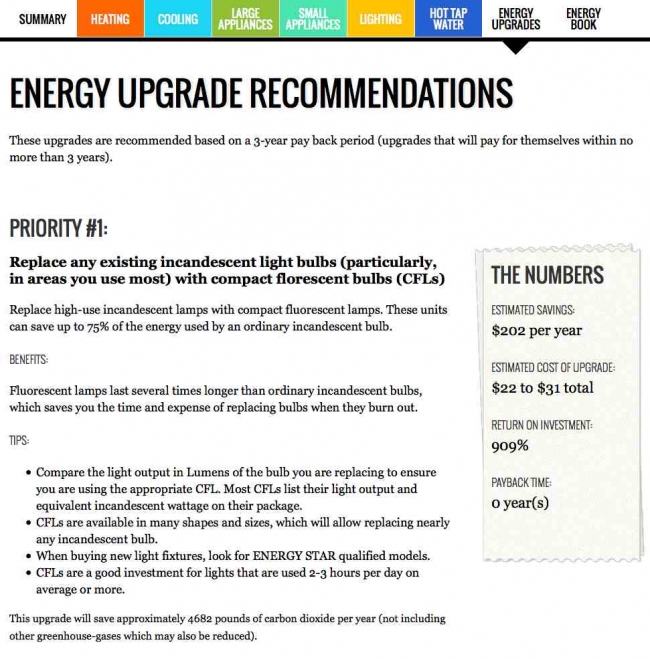 Report Recommendations
Report Recommendations
The Home Energy Report™ applies a fixed, standardized retrofit cost (from NREL's National Residential Efficiency Measures Database) and generates recommendations that provide the highest performance level with a payback time of 10 years or less.
The following two categories and specific upgrades are currently recommended by the report:
Type 1: Improvements and upgrades recommended now--these can help save energy right away:
- add attic insulation
- add basement/crawlspace wall insulation
- add basement/crawlspace floor insulation
- check air tightness around doors and windows
- check exterior walls
- seal ducts
- insulate ducts
Type 2: Recommendations for when equipment needs to be replaced—these
recommendations will help save energy when it's time to replace or
upgrade equipment or systems:
- service or upgrade central air conditioner
- service or upgrade boiler, furnace or heat pump
- service or upgrade room air conditioner
- evaluate the roof's reflectance
- evaluate/add insulated sheathing to roof
- service or add skylights
- add or upgrade insulated sheathing to siding
- service or upgrade water heater
- evaluate/upgrade windows
The recommendations are ordered according to how quickly they will
pay back on the homeowner's investment. Those with the fastest and
greatest payback are listed first. The payback is calculated based on a
national database of estimated installation costs and average utility
rates for the homeowner's state. Carbon reduction is based on a database
of estimated average carbon release from power plants in the home’s
region.
It's important to note that the sum of the savings from the
individual measures in the recommendations section of the report (near
the end of the report) may not equal the total savings for the package
of selected upgrades (the number near the beginning of the report). The
difference is due to interactive effects of individual energy
improvements. When improvements reduce energy consumption within the
same end-use (e.g. a window upgrade plus an air-conditioner upgrade),
the resulting dollar savings is less than the sum of the savings shown
for the individual improvements.
Accuracy of the Energy Calculations
The tool was found to be extremely accurate (within 1% across
groups of dissimilar homes), when given high-quality inputs including
not only about the physical characteristics of the building but also how
appliances and other equipment are operated by occupants.
The National Renewable Energy Laboratory has completed
an assessment analogous to what was attempted in the Oregon EPS study,
i.e., under a special use case in which HES, REM/Rate, and SIMPLE are
utilized in an "asset rating" mode, which holds occupant behavior so as
to isolate the effects of building envelope and equipment. They found
that HES predictions agreed almost perfectly with actual bills, on
average, across a sample of 885 occupied
homes in Oregon (same cohort as the EPS study), Wisconsin, Minnesota,
North Carolina and Texas.
Accuracy
is strongly proportional to the quality and completeness of inputs, yet energy audit
data are often deficient. Predictions are best—and the tendency of models to
over-predict actual consumption is mitigated—when behavioral inputs match
actual conditions. When averaged across groups of homes, Home Energy Saver™ (HES) predicts energy
use within 1% of actual consumption when physical characteristics and occupant
behavior are well accounted for. New research findings promise to confer even
greater accuracy as they are incorporated into simulation tools.
Home Energy Report™ Can Drive Demand
The Home Energy Report
™
can help drive demand for home energy
improvements. The report includes can include costs for energy
improvements with local contractors, major retailers, and utilities
that provide products and services to improve the energy efficiency of
homes. When the homeowner does a major
remodel or replaces equipment (e.g. furnace, water heater, air
conditioner, windows), the report will suggests the most efficient
measures
and provides the energy savings in dollars per staged upgrade. Exclusive
discounts and special offers from major retailers are currently being
offered through
the report in certain markets. The report can also provide homeowners an
easy way to connect with
qualified contractors of
the International Association of Professional
Contractors (www.contractorassociation.org).
Through the Home Energy Report™, InterNACHI is providing millions of
homeowners a free online home-management tool that helps them learn not
only how to operate their homes and maintain them, but how to save money
by saving energy. And long-term relationships between homeowners and
their trusted home inspectors are developed and maintained for the life
of the home ownership.
Targeting Homebuyers
There’s plenty of money being spent on home improvements, even during
a recent recession. Research shows that more than any other consumer, recent
homebuyers spends the most on home improvements, and they spend most of
it within the first two years. In 2009, about $300 billion were spent on
home improvements, but most of it was spent without any regard to
energy costs.

Home inspectors reach an average of 5 million homebuyers every
year. InterNACHI research shows that recent homebuyers spend about
$8,000 within the first year.
That’s $40 billion that home inspectors can influence and, therefore,
“nudge”
households into spending toward home energy improvements.
Over $500 in Savings Every Year
The Home Energy Report™ empowers home inspectors, trained as Home Energy Inspectors™, to help current and
prospective homeowners save money, live better, and help the earth by
reducing energy use in their homes.
The United States consumes more energy than anyone else on the
planet--about 20% of the total global demand. Our buildings and our
homes--the homes in which we live and the homes that we inspect--devour
40% of all U.S. energy and 75% of all U.S. electricity. And about 30% of
that energy is wasted by our homes. Simply put, our homes waste energy.
The Home Energy Report™ recommends energy-saving
upgrades that are appropriate to the home and make sense for the home's
climate and local energy prices. The money invested in these upgrades
commonly earns "interest" in the form of energy savings of over $500
every year, which is an impressive overall annual rate of return on
investment.
Contact:
Director of the Home Energy Inspection Program
303-862-2611 MT
InterNACHI is an U.S. EPA Indoor Air Quality Program Partner:
InterNACHI is proud to be in partnership with the U.S. Environmental
Protection Agency's Indoor airPLUS Program. Through this partnership,
InterNACHI has committed to promoting indoor airPLUS-qualified homes
that provide homeowners with improved air quality.
https://www.nachi.org/indoor-air-plus.htm
InterNACHI is an U.S. EPA ENERGY STAR® Program Partner with logo and advertisement privileges:
InterNACHI has privileges to use the
ENERGY STAR® logo and ENERGY STAR Advertisements within the InterNACHI
Home Energy Inspection Tool.
InterNACHI is an U.S. Department of Energy Partner with the Home Energy Score Program:
Resources:
Note: The InterNACHI Home Energy Report
™ is
not the
Home Energy Score,
although independently each are intended to help the service provider establish the
potential energy savings in a home and demonstrate to the homeowner the
value of pursuing a more comprehensive audit that produces a formal
retrofit work scope proposal.
InterNACHI Home Energy Report:
LBNL Home Energy Saver (HES) Tool Accuracy Documentation:
Oregon EPS Study: Comparison Between HES, REM/Rate, and SIMPLE:
InterNACHI is a U.S. Department of Energy Home Energy Score Partner:
InterNACHI receives U.S. EPA approval to use ENERGY STAR logo within Tool:
InterNACHI and Boulder County EnergySmart Join in Partnership:
InterNACHI receives U.S. EPA Approval as Ally Partner with EPA Indoor airPLUS Program:
Kitchen Table Strategy: Home Inspectors Driving Demand for Home Energy Improvements:
https://www.nachi.org/kitchen-table-strategy-driving-demand.htm 
 How Does It Work?
How Does It Work? Report Recommendations
Report Recommendations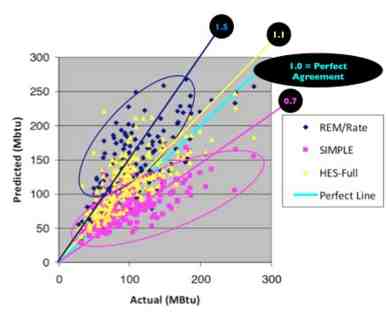 U.S. Department of Energy's Lawrence Berkeley National Laboratory's Home Energy Saver™ is the engine that powers InterNACHI's Home Energy Report™. In 2012, with leadership from the Florida Solar Energy Center, the DOE's Lawrence Berkeley National Laboratory
completed an unprecedented accuracy assessment of the Home Energy Saver™
model.
U.S. Department of Energy's Lawrence Berkeley National Laboratory's Home Energy Saver™ is the engine that powers InterNACHI's Home Energy Report™. In 2012, with leadership from the Florida Solar Energy Center, the DOE's Lawrence Berkeley National Laboratory
completed an unprecedented accuracy assessment of the Home Energy Saver™
model.  Home inspectors reach an average of 5 million homebuyers every
year. InterNACHI research shows that recent homebuyers spend about
$8,000 within the first year.
That’s $40 billion that home inspectors can influence and, therefore,
“nudge”
households into spending toward home energy improvements.
Home inspectors reach an average of 5 million homebuyers every
year. InterNACHI research shows that recent homebuyers spend about
$8,000 within the first year.
That’s $40 billion that home inspectors can influence and, therefore,
“nudge”
households into spending toward home energy improvements. 